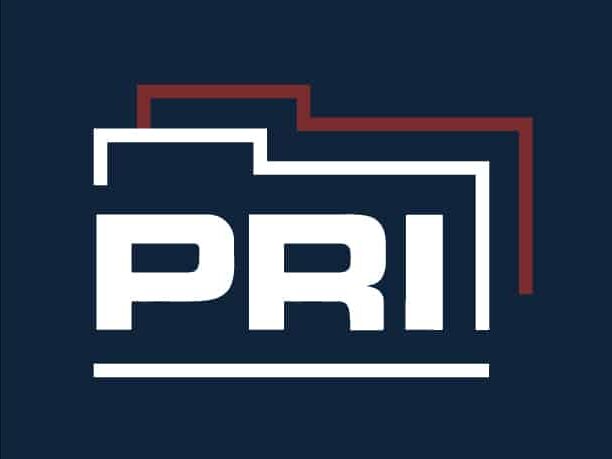Article PDF
June 2024
The mission-critical role of Computer-Aided Dispatch (CAD) and Records Management Systems (RMS) in public safety operations cannot be overstated. These systems, which streamline emergency response, enhance data management, and foster interdepartmental coordination, are the backbone of modern public safety. However, their effectiveness is contingent upon robust IT support, often provided by local IT departments in combination with the system vendor. But what happens when this backing is inadequate, and which two primary public safety systems are affected most by lagging support?
Computer Aided Dispatch (CAD) systems help public safety agencies manage and respond to emergency and non-emergency calls. They provide real-time information to dispatchers and field units, including location tracking, incident prioritization, and unit availability.
Records Management Systems (RMS) are databases that store and manage public safety records, including incident reports, arrest records, evidence, and case management. They are crucial for analysis, reporting, and legal compliance.
Challenges of Inadequate IT Support
- System Downtime: Poor IT support can have severe repercussions. Extended system outages, directly resulting from inadequate support, can significantly hamper emergency response times and even jeopardize public safety.
- Integration Problems: CAD and RMS often require integration with other public safety software. Poor IT support hinders seamless data flow between systems, limiting the usefulness of information.
- Delayed Updates and Maintenance: Without timely updates and maintenance, CAD and RMS systems become vulnerable to security breaches, performance issues, and data corruption.
- Compliance and Security Risks: Public safety systems handle sensitive information and must comply with various regulations. Poor IT support can lead to non-compliance and data breaches.
- User Training and Support: Efficient IT support is not just about fixing issues; it’s about empowering public safety personnel. Comprehensive training can be provided with adequate support, enhancing their ability to use CAD and RMS effectively and ensuring the systems are utilized to their full potential.
These challenges are not unique and, surprisingly, quite common. Regardless of your CAD or RMS infrastructure, on-prem, hybrid, or cloud, inadequate support mechanisms can have significant repercussions for the end users and their ability to perform their duties adequately. Whether it’s server updates, IP firewall access, interface services, or network connectivity, no system is immune to the need for adequate IT support.
Strategies for Improving Internal IT Support
- Dedicated Public Safety IT Teams: Establish specialized IT teams dedicated to supporting CAD and RMS systems. These teams should have in-depth knowledge of public safety workflows and software requirements.
- Training and Certification Programs: Provide comprehensive training and certification programs for IT staff to enhance their understanding of CAD and RMS systems and their specific requirements.
- Third-Party Support Services: If local IT departments cannot provide adequate support, consider partnering with third-party support services specializing in CAD and RMS systems, such as network engineers and database administrators.
- Collaboration with Vendors: Foster strong relationships with CAD and RMS vendors to ensure direct support channels and quicker issue resolution.
- Regular Audits and Assessments: Conduct regular audits to identify and address gaps in IT support. Also, regularly assess system performance, security, and compliance to preempt potential issues.
- Help Desk and SLA Improvements: Implement a dedicated help desk for public safety IT issues with clear Service Level Agreements (SLAs) to ensure quick and effective problem resolution.
- Cross-Departmental Collaboration: To better understand and prioritize CAD and RMS support needs, foster collaboration between IT, public safety agencies, and other departments.
- Cloud-Based Solutions: Consider migrating CAD and RMS systems to cloud-based platforms for improved scalability, reliability, and vendor-managed IT support.
Lastly, public safety operations run around the clock, a reality that civilian IT support staff must fully grasp. Unlike typical office environments, where a response can wait until the next business day, public safety demands immediate action. The phrase “We can wait until tomorrow” or “We can get to it on Monday” is not an option; delays can have profound implications for public safety.
Effective communication is crucial in highlighting the urgency and potential consequences of network and system outages in public safety settings. IT staff should know that even minor delays can lead to cascading repercussions. For example, a delayed response to a system outage might hinder emergency dispatch capabilities, potentially resulting in slower emergency response times during critical situations. This kind of communication helps civilian IT personnel understand the stakes involved and the importance of their role in the larger public safety ecosystem.
Practical, immersive experiences like officer ride-alongs and dispatcher sit-alongs can be instrumental in bridging the cultural divide. By experiencing firsthand what a day in the life of public safety personnel looks like, IT staff can gain a deeper appreciation and understanding of the challenges and pressures these professionals face. Such experiences foster empathy and enhance collaboration, as IT staff can better tailor their services to meet the unique needs of public safety operations.
While local IT departments are not unaffected by resource constraints, there are strategic steps they can take to improve support quality. By understanding the unique challenges of public safety IT, investing in specialized teams, and leveraging partnerships, agencies can significantly enhance their CAD and RMS systems, ultimately leading to improved public safety outcomes.
How PRI Can Help
PRI specializes in public safety information management consulting, training, and technology. We help mitigate risk, re-engineer processes to enhance efficiency, and achieve compliance.
Since our establishment in 2008, we have been steadfastly dedicated to assisting law enforcement with procuring, managing, and implementing information management systems, procedures, and policy, all the while ensuring compliance with the complex landscape of public records, NIBRS, and technology standards.
Our web-based public records request management system, GovQuest, allows you to receive, track, assign, and process requests online. Our consulting programs help you implement technology successfully, while controlling vendor’s unnecessary costs.
Contact us for assistance at info@policerecordsmanagement.com or 305-460-0096.

 0 ITEMS
0 ITEMS